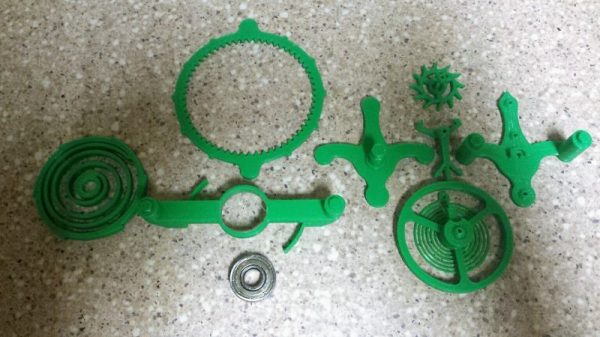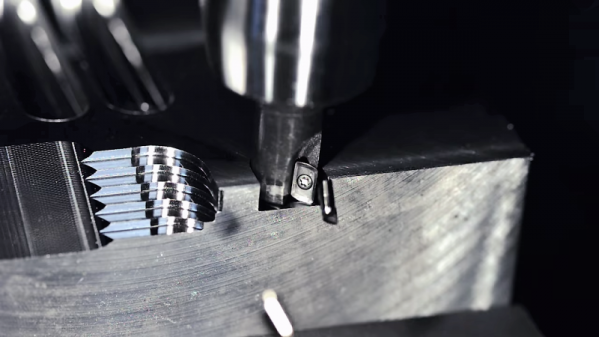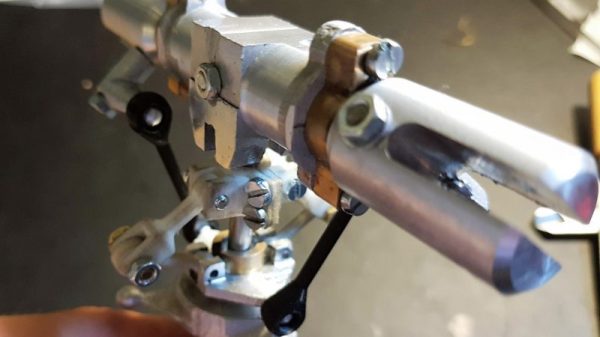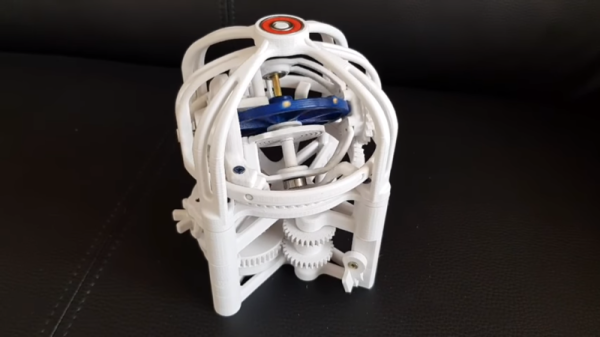It may only run for a brief time, and it’s too big for use in an actual wristwatch, but this 3D-printed tourbillon is a great demonstration of the lengths watchmakers will go to to keep mechanical timepieces accurate.
For those not familiar with tourbillons, [Kristina Panos] did a great overview of these mechanical marvels. Briefly, a tourbillon is a movement for a timepiece that aims to eliminate inaccuracy caused by gravity pulling on the mechanism unevenly. By spinning the entire escapement, the tourbillon averages out the effect of gravity and increases the movement’s accuracy. For [EB], the point of a 3D-printed tourbillon is mainly to demonstrate how they work, and to show off some pretty decent mechanical chops. Almost the entire mechanism is printed, with just a bearing being necessary to keep things moving; a pair of shafts can either be metal or fragments of filament. Even the mainspring is printed, which we always find to be a neat trick. And the video below shows it to be satisfyingly clicky.
[EB] has entered this tourbillon in the 3D Printed Gears, Pulleys, and Cams Contest that’s running now through February 19th. You’ve still got plenty of time to get your entries in. We can’t wait to see what everyone comes up with!
Continue reading “3D-Printed Tourbillon Demo Keeps The Time With Style”


















